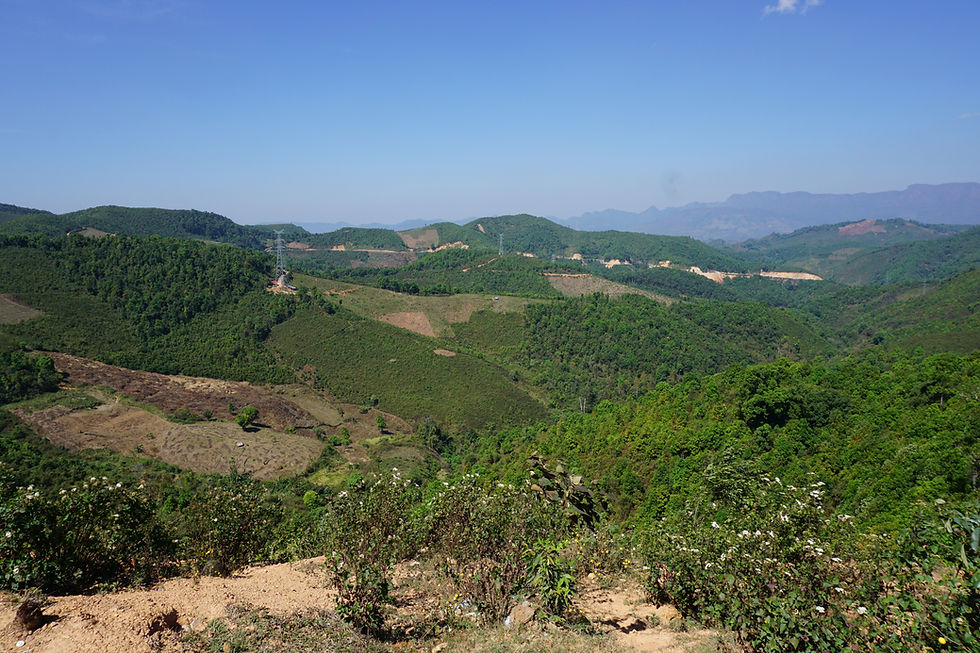Off to Luang Prabang!
- Marleen
- 21. März 2017
- 3 Min. Lesezeit

We are taking an afternoon break from the heat, relaxing in one of the numerous little huts on stilts along the roadside. Since we have crossed into Laos, we have spent our days cycling up and down the beautiful mountains in the north of the country. We are one day away from Luang Prabang, the second largest city in Laos and declared a World Heritage Site by the UNESCO. Besides resting and relaxing in this lovely city, we will apply for our Chinese visa and hope to see some fellow cycling friends again.

Sitting here in the heat, I see smoke rising from the forest in the distance. Slash and burn agriculture is common here and we often see large burnt areas. Besides destroying the forest, the smoke fills the air around us, making it sometimes hard to breath. The hills in front of us are mostly deforested and in some places rubber, teak and banana plantations have replaced the dense forest.

Many of the plantations are owned by Chinese businessmen, who we see everywhere traveling in their expensive vehicles. The Chinese impact can be seen and felt everywhere around us. For example, the road we cycle on is brand new and in best condition. It also leads directly towards the Chinese border. We have seen large factories and mines, streets filled with Chinese restaurants and shops selling Chinese products, Chinese tourists (taking pictures of us), and several Chinese hydro power projects.

It is arguable, that the Chinese are bringing development to Laos and playing their role in the 7% overall economic growth. However, from the saddle it looks like this development brings large scale negative change to the environment and probably also to many of the small ethnic villages. In the distance I see a group of children running through the bright green rice fields. Lao has the youngest population in Asia, with the median age lying at only 19 years. The villages are filled with little kids, who are always enthusiastically waving at us and yelling their friendly "sabaidee", hello. Sometimes they even run beside us and try to give us a high five or cheer us on when crawling up a steeper slope. As Sera put it, it feels like VIP cycling here. What amazes and startles me most though, is how these small children walk, play and live directly beside the road where trucks and buses whiz through. More than once, Sera and I held our breath, as we saw a truck approaching at great speed and the children playing half on the pavement.

As another truck drives by behind us, filled with Chinese products, I wonder to myself how much the lives of the people here will change. Traditionally the people living in these hills depend greatly on hunting and gathering to sustain their livelihoods.

Most of what they need, they get from the forest. Their diet is further supplemented by the fruit and vegetable they grow and the animals they keep. But with an ever declining forest area and the animal species diminishing, what will their future look like?

It is now 3:30pm. With the hottest hours of the day behind us, we jump back on our bicycles to ride another 30km. Little do we know then, that the bungalows we intended to spend the night at, are more a luxury getaway and that we will spend another night in the tent, this time in the safe surroundings of a temple with a lone monk welcoming us.





















Kommentare